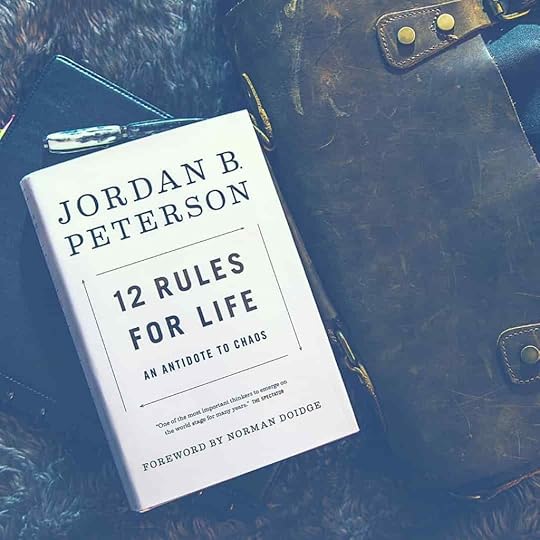“Write What You Know” and Other Terrible Writing Advice
Writing advice abounds on the internet. But as with all things online, you can’t believe everything you read.
When looking for writing advice, I strongly recommend taking every piece of advice with a grain of salt. Your writing will differ from everyone else’s in the entire world, and you need to do what works best for your story.
That said, there is wisdom in knowing the “rules” of writing and why the exist. That way, you’re choosing whether to follow a rule for a specific reason, not just writing blindly.
And now, I present my rant on the most terrible writing advice I’ve seen plastered (seemingly everywhere) online.

1.“Write What You Know”
I can’t tell you how many times I’ve
heard writers say you must write what you know, and nothing else.
This is ridiculous.
Yes, you’ll naturally be drawn to write what you know. And if you aren’t already writing something that moves you, something that reflects the core of who you are, you’re doing it wrong.
But that’s as far as I allow the
definition of “write what you know” to influence my writing
decisions.
I’ve written plenty of stuff I know
nothing about. It takes longer
to write this way, because it involves research. But I’ve learned
some amazing things and found inspiration in learning itself.
And realistically,
what I know is pretty limited.
There’s a lot of criticism these days about the lack of diversity in literature.
This seems to me evidence that hordes of writers are sticking to “what they know.” Maybe that’s why they (and even I) have remained in keeping with “typical” conventions, particularly in fantasy literature.
And
you know what? I agree that the same old societal structures can
become boring. It’s time to break away from that in literature.
Start
writing what you don’t
know.
Learn something. Diversify.
(And please forgive me if my next 3 novels are too “typical” in their settings and societal structures. I have to finish what I started).
2. Read Everything You Can Get Your Hands On

Oh, come on. Read everything?
Writers should read, and read a lot. But nobody has time to read everything–nor is it advisable to read anything and everything you come across.
One of my favorite authors, Michael Moorcock, says writers should “read everything you can lay hands on.”
But Moorcock also goes on to say, “read everything… from Bunyan to Byatt,” implying he doesn’t recommend reading every book in existence, at random and without a strategy.
Instead, he seems
to recommend reading books of quality, and a diverse selection at
that.
“Stop reading
everything in your genre,” says Moorcock.
Personally, I found this point surprising at first. Then, I thought about the times I’ve experience writer’s block and started reading for inspiration.
I didn’t read Lord of the Rings, or King Arthur books, or anything that took place in a world with a similar setting to my own WIP’s.
I didn’t even read high fantasy, which is basically what I’ve been writing for the past… forever… years of my life. I did read fantasy, because that’s my jam. But I read contemporary fantasy, urban fantasy.
I looked for authors who wrote in ways that made my jaw drop. Some random, non-fantasy fiction from the library even made its way into my hands during one particularly difficult bout of writer’s block.
But what was my
criteria for reading these books?
When I’m
experiencing writer’s block, I look for books that inspire me. Books
that get to the heart of why I write.
If I’m reading to improve my writing skills, I do exactly what Moorcock said. I read renowned literature. Bestsellers. I look for literature that has impacted the lives of thousands, because that’s the kind of book I want to write.
When I read these
books, I do so with purpose. Sometimes, if I’m pressed for time, I
watch movies or TV shows instead.
(Heresy, I know).
But I do it for a reason, and that reason is to remind myself about what makes a story tick, which aspects of plot development I find the most engaging.
And it works.
I could go on for hours about how to read with purpose, for inspiration, and in a way that helps you write better. (See also: 10 Hacks for Overcoming Writer’s Block).
3. You must write 1,000 pages before you can write one good page

College professors told us this, and
for a long time, I believed it.
I mean, to be fair, you do have to write a lot before your writing will improve. But there’s a difference between improving your technique and assuming your writing is terrible because you haven’t written 1,000 pages yet.
I look back on what I wrote in high school, and yes, it’s a far cry from what I’d consider worth publishing now. But what I wrote back then was leagues ahead of most people my age. (Humble, aren’t I?) I’ve always been a good writer, and the comments teachers left on my homework are proof of that.
It’s important to recognize your own
skill and celebrate it.
Don’t let people tell you that you
aren’t a good writer because you haven’t written “enough.”
Do you know how many people in this world are incapable of writing a cohesive sentence? (If you need evidence of this, look no farther than social media).
You are a good writer. Believe in yourself and work hard, and you’ll be as fantastic as you want to be.
4. Avoid purple prose

Ok, I guess I don’t really have to disprove this one because Writing Excuses has done it for me.
Yes, I’ve talked about the Writing Excuses podcast on my blog before, and I will probably keep talking about it. (You can’t stop me. It’s in my brain now, intertwined with all my thoughts the same way Aubrey from In the Forests of the Night and Lestat used to banter with one another in my imagination. “Used to.” Yeah…)
Honestly, I had no idea what the heck purple prose even was until they talked about it on Writing Excuses. But I immediately understood what they meant.
You know, when
people use over-the-top descriptions for mundane things, and it just
makes you cringe?
None of us have ever been guilty of
that, right?
Reality check: everyone has written purple prose at one time or another. It’s all part of the process.
The phrase “purple prose” comes from medeival times, when people used to wear splashes of purple to show off their wealth. The more purple you could afford, the richer you were.
Writers who throw
splashes of rich, eloquent text into the midst of plainer
descriptions are often accused of purple prose.
I loved Brandon Sanderson’s definition
of purple prose, not as “bad” prose, but rather, prose which
stands out from the rest of the text with such contrast that it seems
out of place.
He actually recommended, if you notice
purple prose in your writing, to elevate the rest
of your writing to that level of description and eloquence, rather
than “dumbing down” the empurpled section.
So, purple, eloquent prose writers, be free! (As long as most of your text is purple).
5. Never write a Mary Sue

I heard this “rule” for the first
time at a writing conference. Out loud, in the middle of a panel
discussion, I said, “A what?”
A nice poet leaned over to me and said, “A Mary Sue is writing yourself as the main character.”
“Oh,” I said, frowning.
Inside,
my brain was saying, Isn’t that everything I’ve ever
written?! Isn’t that what I’m about to publish?!
I could’ve gone wallowing in despair,
lamenting my failure as an author. I could’ve chosen not to publish
Green Lady, for fear I’d just
committed some cardinal sin of writing.
But here’s the
thing.
Even as I was
sitting there in the audience, frowning over this “rule,”
something struck me as odd.
Yes, my main character is an embodiment of who I might be if I were a princess living in a medieval universe where magic exists. But she’s not me.
There’s no way, in
real life, that I would be sleeping in the bug-infested wild, risking
my life leaping through the treetops, or running around barefoot in
the woods all day (okay, maybe that last one).
And
there’s certainly no way I would trust a random shapeshifter who’d
clearly been stalking
me (for reasons I won’t divulge because… spoilers!)
So the concept of a
Mary Sue just defies reason, if you ask me.
Some
writers define
a Mary Sue as “a character the author identifies with so
strongly that the story is warped by it.”
This, I can see. Anything that turns your story into a soapbox is guaranteed to disappoint.
But unless you’re
literally writing your life’s story, set in the real world, fact for
fact, your character will never truly be you.
(And if you are writing your life’s story, I think you’ll soon find that authors struggle to convey who they are without adding a bit of fiction to their story. Just ask Hemingway).
At that same
writing conference, I also attended a presentation on the psychology
of personalities. I then proceeded to take the Meyers-Briggs
personality test, not only for myself, but for every single one of my
characters.
If you’re
interested to find out, I’m an ENFJ, a personality type that I share
with only 2% of the world’s population.
Turns out, I scored a perfect 50/50 split between being introverted and extraverted. (This explains why I don’t seem to understand the concept of being introverted or extraverted). Thus, I am also an INFJ. (I’m a super-rare enigma, guys. Watch out. I’m a chameleon!)
I was also fascinated to find out that my suspicion about Mary Sues was correct.
None
of my characters were an ENFJ or an INFJ. However, every
single one of them reflected an aspect
of my personality.
That’s right. Every single character in my story reflects a small part of my subconscious. Surprise!
If
you’ve read Green Lady, you
may find it entertaining to learn my characters’ personality types. I
wrote a separate blog post about it here.
If you
haven’t read Green Lady,
you may still find it interesting to delve into personality
development. (I sure did).
Also,
if you haven’t read Green Lady…
get on it, yo! (Shameless plug). People have said it fills them “with
intrigue and awe,” makes you “envision nature as a powerful
divinity,” and that it’s like “simultaneously exploring a new
world and revisiting a familiar childhood haunt.”
And if you’ve ever
wondered just how much your subconscious will be on display
throughout your writing, there’s your answer, in the quotes above.
This book was, in fact, inspired by my wish to revisit a “familiar
childhood haunt.”
Which is exactly why I have a Mary Sue.*shakes fist at sky*
6. Follow the rules of writing to the letter (haha, get it?)

Don’t get me wrong, rules exist for a
reason. Sometimes, the reasons are pretty big.
If you don’t know what some of these rules are or why they exist, well. Edumacate yourself.
Once you know why the rules exist, you
understand how to break them. Strategically.
For example, one of my biggest pet
peeves is the rule “never use alliteration in prose.”
“Avoid alliteration always,” they
say.
But for me, it’s more like, “Apply some alliteration, already!”
One rule I will always follow, 100% of
the time, (I’ll get back to the alliteration thing in a second) is to
never do anything that pulls the reader out of the story.
Any “rule” you break, whether it be
radical conversation tags or excessive use of exclamation marks, if
it distracts the reader from the story, it’s bad.
Bad writer. Bad.
But, that said, I’ve seen writers pull
these things off effectively and still cultivate an audience of
dedicated fans.
It’s all about why you’re doing what
you do.
I use alliteration quite frequently in
Green Lady, and it doesn’t (I
hope) pull the reader out of the story.
(If I’m wrong,
please tell me so I can go smack myself on the head with a rolled-up
newspaper and question all of my life choices. But even my editor
didn’t push back on my use of alliteration, so I think I’m safe).
To understand why I
can successfully use alliteration in my novel, you first have to
understand the purpose of alliteration.
Alliteration does
many things. The sound of successive consonants can create rhythms
and add flavor to the text. Sounds, just like words, have
connotations. You can use alliteration to develop a mood, or an aura
so to speak, for a given scene.
You can use
contrasting sounds to influence the reader’s perceptions or support
what’s happening in your scene.
You can even use
alliteration for personification. “S” sounds can echo the
whispering of trees when characters are sneaking through the woods.
Harsher sounds can built tension or establish the mood of a fight.
But,
similar to rhyming, alliteration also causes the reader to
hyper-focus on the sound of
the text.
This is why I
expect the phrase “avoid alliteration always” has become common
wisdom in the writing world.
Alliteration really
is a double-edged sword. Imagine:
Your prose has been
going along fine, maintaining a certain rhythm, but then you suddenly
start using strange sounds and change the chosen rhythm with
concurrent consonants, causing confusion, confronting your reader
with curiously-focused description…
Your reader will
probably lose their place and struggle to read the sentence.
Alliteration defies
the way people speak. It has the potential to create new, interesting
sounds, but when used in the wrong place, can interrupt the reader’s
experience and draw their attention away from the story itself.
Which, as I
mentioned, is the only rule I think writers truly need to abide by
100% of the time.
(There’s probably
an exception for that, too. But I bet you it’s rare).
I,
personally, love using alliteration to draw the reader’s attention to
a particular description. Half the purpose of Green Lady
was to bring to life a world I loved as a child—half-real, half
fantasy.
Thus, I need
readers to pause or slow down during certain descriptions, because
they’re feeling a sense of awe in discovering this world. The impact
is better if they have time to savor it.
My hope is that my
use of alliteration achieves that affect. I’ve been told that my
descriptions of the forest and the world are rich and beautiful,
poetic. That’s exactly what I was going for.
I
doubt I evenknew why
I was using alliteration when I wrote those scenes. All I knew was
that it felt right.
So, if
you want to break a rule, break it. Just use your intuition to do
what feels right for your story. And if you fail miserably, just
smack yourself on the head with a rolled-up newspaper and say, “Bad
writer! Bad!”
(No really, that’s proven methodology).
7. Build Your Audience Now, Now, Now!

Um, right. So, how exactly am I supposed to build an audience if I don’t have anything to give them yet?
Even I don’t have all the time in the world. Like many authors and self-starters out there, I work a full-time job, with writing as my side hustle.
I’d love nothing more than to be able to produce endless free ebooks, free downloads, and all kinds of other value content goodies for my readers.
But time can be a real struggle. On top
of working full-time and writing long
fantasy novels, I’m a mother of 2 young boys. I run a local writing
group and manage my own website. I produce my own web content, work
with contractors on book cover design, hire my own editor, create my
own messaging, fill my own orders, format my own books, manage my own
finances, schedule my own appearances…
Heck, I even DIY my
own furniture.
My time is split in
so many directions!
Even I have to take a break and binge watch Asian TV dramas on Netflix now and again. 



